In the Home
A Look at the Trends

Current in-home trends reflect homeowners’ inclinations to nestle into the quiet luxury of understated opulence, rather than indulge in flashy design, says builder Kent Hoffman, owner of the OKC-based Kent Hoffman Construction. Instead of moving, today’s homeowners also want to improve their existing spaces.
While the 2020 pandemic led to a rise in home office installations, Hoffman says that “COVID focused people more on improving their homes in general, as they’re spending a lot of time there. The thinking is that if it happened again, our homes would be ready. And some people aren’t traveling as much, so they’re using that income to improve their homes.”
Many people are opting to re-do kitchens and upgrade primary bedrooms with ensuite bathrooms and closet expansions.
“There’s also a great demand for outdoor living spaces,” says Hoffman. “This can be as simple as a patio or as involved as a covered outdoor living room with sun-blocking blinds, a TV, heating, a fireplace – and frequently this includes a pool.”
But trends vary with the scale and price point.
“We are blessed to work in a very high-end world of projects,” says Hoffman. “We are getting more requests for two kitchens – a main kitchen and additional prep kitchen that is often a ‘butler’s pantry.’ The open living concept is still popular, but now people are also wanting a separate dining room. Overall, kitchens opening to a family room and onto an outdoor living room are popular, as a lot of living goes on in those spaces.”
Style choices can vary widely, he says, but in general, modern style is au currant with people seeking that clean, sleek, open ambiance with light colors and countertops.

Home Improvement
Home improvement projects continue to be a consumer draw to build equity in one’s home as well as curate features to fit the desires of a homeowner. Current demand is high to incorporate multigenerational spaces – meaning additional entrances for parents or for kids moving back home, as well as basements with full kitchens and baths and multi-use playrooms. A record number of baby boomers are aging in place as well, creating a need for safety improvements like walk-in tubs and stair lifts.
Kathy Caviness with OKC-based Caviness Landscape and Design has noticed home improvement measures that also improve one’s health.
“A big trend in 2024 is a concentration on health benefits. Outdoor cold plunge features starting around $4,900 are rising in popularity due to the health benefits,” she says. “These built-in cold plunges can be integrated into the landscape like a hot tub or spa would be. The benefits are numerous – from enhanced mood and focus to reduction in inflammation and muscle soreness. Saunas are rising in popularity again as well. When combining the two, the benefits improve even more. Integrating both into a landscape design where they can blend in and not be an eyesore can be achieved with an experienced landscape designer.”
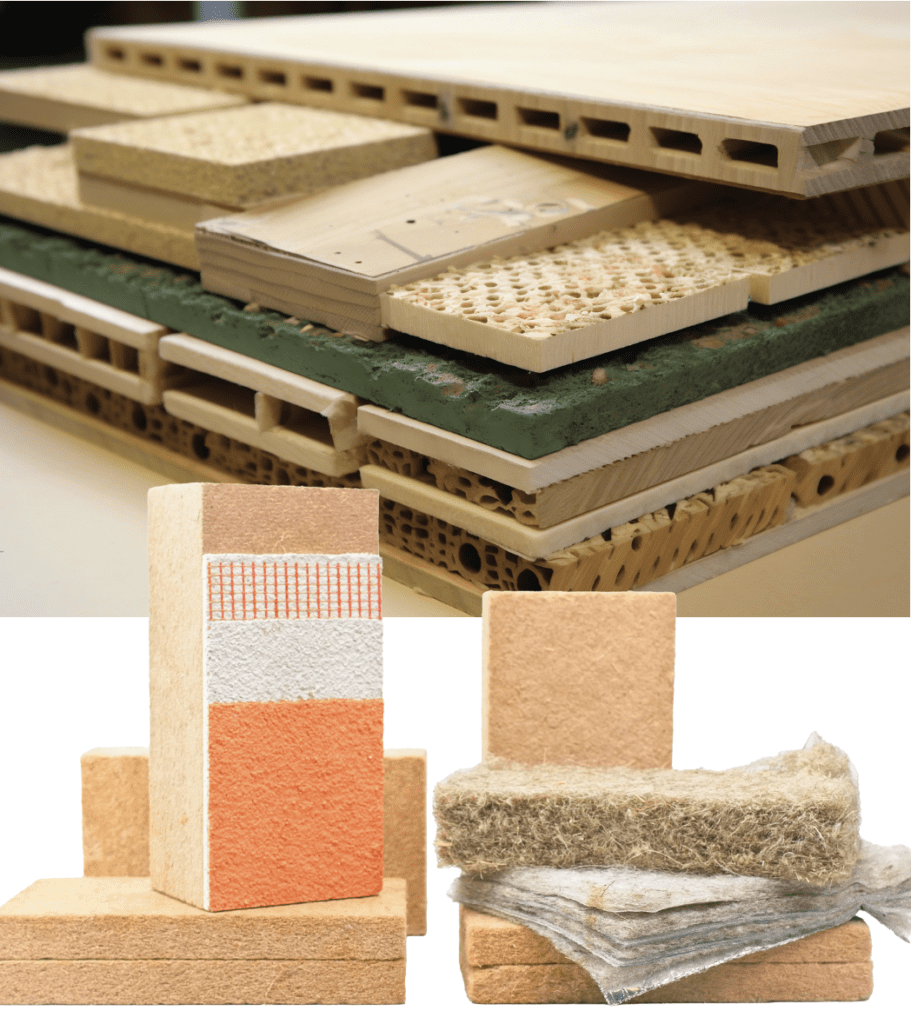
Keeping It Sustainable
Going green continues to remain a top priority for homeowners and designers in 2024. Practices to become more sustainable run the gamut and include energy efficient lighting; the use of recycled, repurposed or reclaimed materials; upgrading and sealing windows and doors to reduce the need for air conditioning; purchasing energy-efficient appliances; solar energy usage; eco-friendly paint for renovations or new projects; and even growing food-bearing gardens.
“I see a greater awareness and requests for environmentally sustainable materials and for smaller houses with more efficient use of square footage,” says Brian Freese, owner of Tulsa-based Freese Architecture. “There is a greater desire to create homes and spaces more personally meaningful and not designed to impress others. We are designing our homes to be intentionally spare in the selection of materials so there is a greater emphasis on overall space and volume and connection to outdoors.”
The demand for solar energy incorporation is rising, Freese says, adding that both residential and business projects are finding value in that investment.
“We’re also seeing an increase in the desire for the use of natural materials such as repurposed materials, wood and stone,” he says. “There is more information out every day about the embedded chemicals in construction projects with VOC – volatile organic compounds – and the dangers of VOC outgassing has more people choosing natural materials.”
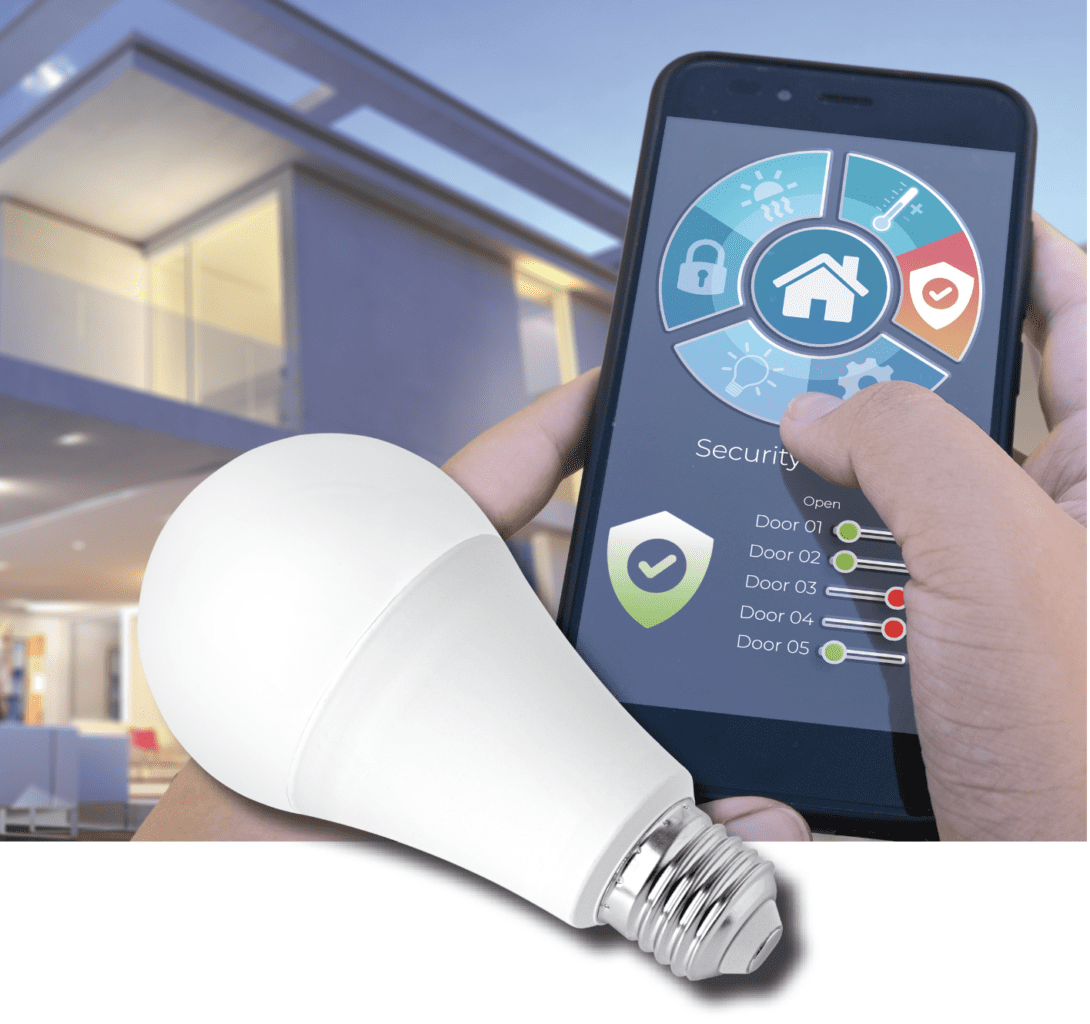
Tech-O-Clock
Home safety and security never go out of style, and Hoffman continues to see a focus on security technology “that is all tied to the homeowners’ phone, where they can monitor and control things like sound, lighting, temperature control, the garage door, appliances and audio/visual. You name it, and there is an app that will automate your phone and devices.”
When it comes to in-home tech, “connectivity is constantly evolving, incorporating everything from air purification systems to automatic window and shower cleaners, entertainment hubs that connect all devices into one, and even programmable smart bulbs that use LED technology.
“Contractors are seeing a rise in high tech doorbells, security cameras and digital security locks, as this technology is becoming more affordably accessible,” says Hoffman.
In the Garden
Outdoor Trends
Immersing oneself in nature, especially in the garden, is one of life’s richest rewards, and trends continue to reflect a reverence for sustainability in gardening efforts. Other green trends include houseplants that provide pops of color, indoor wall gardens with oxygen-enhancing properties, indoor trees and hortifuturism – which is the practice of creating futuristic-looking gardens for maximum entertainment. (Think metallic hues, neon colors and unique plant shapes.)

“With a lot of people choosing to stay in their current homes, a ‘refresh’ to their landscape is high on the list,” says Caviness. “Even if they will be planning to put their home on the market in the near future, the landscape is the ‘frame’ of the home and the first and last impression made to a potential home buyer. Even clearing out overgrown plants, refreshing the soil, adding new mulch and seasonal flowers can make a dramatic difference. Reaching out to a reputable landscape designer to create a plan – and who can even do the installation if you want – is a smart choice in order to bring the desired results.”
Hoffman agrees about the importance of landscape maintenance, and has also noticed a nod to sustainability in recent years.
“We’re seeing a lot of demand for synthetic grass in outdoor patios and outdoor living rooms,” says Hoffman. “It is especially popular for older people and people who travel a lot in general. Here in Oklahoma, it can be difficult to maintain lawns with our severe climate, and there is the cost of water and a conservation aspect of it. – fertilization and mowing and all those things associated with natural grass, so we have this big move to move to synthetic.”

Health Benefits of A Green Thumb
The Mayo Clinic says gardening has a variety of health benefits, including increased exercise – as gardening is more active than people realize. It also improves diet and fiber intake if you’re growing your own produce. Reducing stress and spending time in nature are also priceless benefits of getting one’s hands in the dirt and spending time under the sun; AARP reports that outdoor time increases one’s vitamin D levels and lowers the risk of dementia due to physical activity and emotional engagement. Experts also point to possible social benefits from participation in community garden efforts and local gardening clubs.
Types of Gardens
A garden reflects its owner, and each is a unique product of that constructive interaction with nature. There are a variety of garden types that appeal to different folks and locations.
Garden styles range from classic to modern and everything in between, like rock gardens, designed to look like a natural part of the surroundings. Other types include Japanese, English cottage, Mediterranean, tropical and desert styles. For those short on space, try container gardening or go vertical with a garden built on a supportive structure to create a green wall in the home or outside.
Pollinator gardens are an option designed with the intent of growing specific nectar and pollen-producing plants to attract pollinating insects.
How to Start a Garden
Turning a yard into a garden starts with deciding on placement and then testing the soil with the experts to determine what types of items to plant.
Testing kits are available at chain retailers, or you can submit samples to the Tulsa County OSU Extension Center or the OSU Soil Testing Laboratory in OKC. Experts suggest choosing native plants and establishing garden beds before planting seeds and seedlings. Mulching retains water and maintenance tasks include fertilization, watering and weeding.
A basic set of gardening tools, according to The Old Farmer’s Almanac, includes a hand trowel, a cultivator, spades and shovels, rakes, pruning shears, a wheelbarrow, a watering can and a gardening hose.
Combining Indoor and Outdoor
Perfecting Water Features
Water features remain high in homeowner popularity – both indoor and outdoor.
“We do a wide array of outdoor water features,” says Freese. “I try to incorporate some water element in every project we do, and rarely do clients turn down the option – as people love that sound of trickling, babbling water. In my own office entry courtyard, there’s a water feature in the middle, and it’s a captivating example for clients to reference.
“Indoor features tend to be smaller and are always very present, creating sound,” Freese continues. “Typical indoor placement is in stairwells, entries and/or adjacent to living and dining rooms. In a recent project, the indoor water feature was in the entry vestibule right off the garage and incorporated a small waterfall into a basin to calm and activate that spot as a soothing experience when coming home.”
Hoffman typically creates outdoor water features “as part of a patio,” he says. “The water feature is often a fountain that the owner has purchased, or perhaps we’ll incorporate a waterfall with a new swimming pool, often with the infinity edge to the pool. We just finished a project with an 8-foot-tall wall of water cascading down tiles and falling into the pool.”
Caviness agrees that no matter the water feature you choose, it will only add to your ambiance. Remember, however, to plan ahead and consider your space.
“If you are considering a water feature of some sort, there are a multitude of options available,” she says. “From nature-inspired waterfalls that spill into a small pond, ‘pondless’ water features that could include a statue or stone element, water walls, stream beds – whether a natural look or a more structured style – add so much to the quality of life in your outdoor living space. If considering a water feature, budget for landscape plant material and landscape lighting, if you can. Also, you might consider freeze-protection equipment that will automatically kick on when the temperature drops.”

Perfecting the Patio
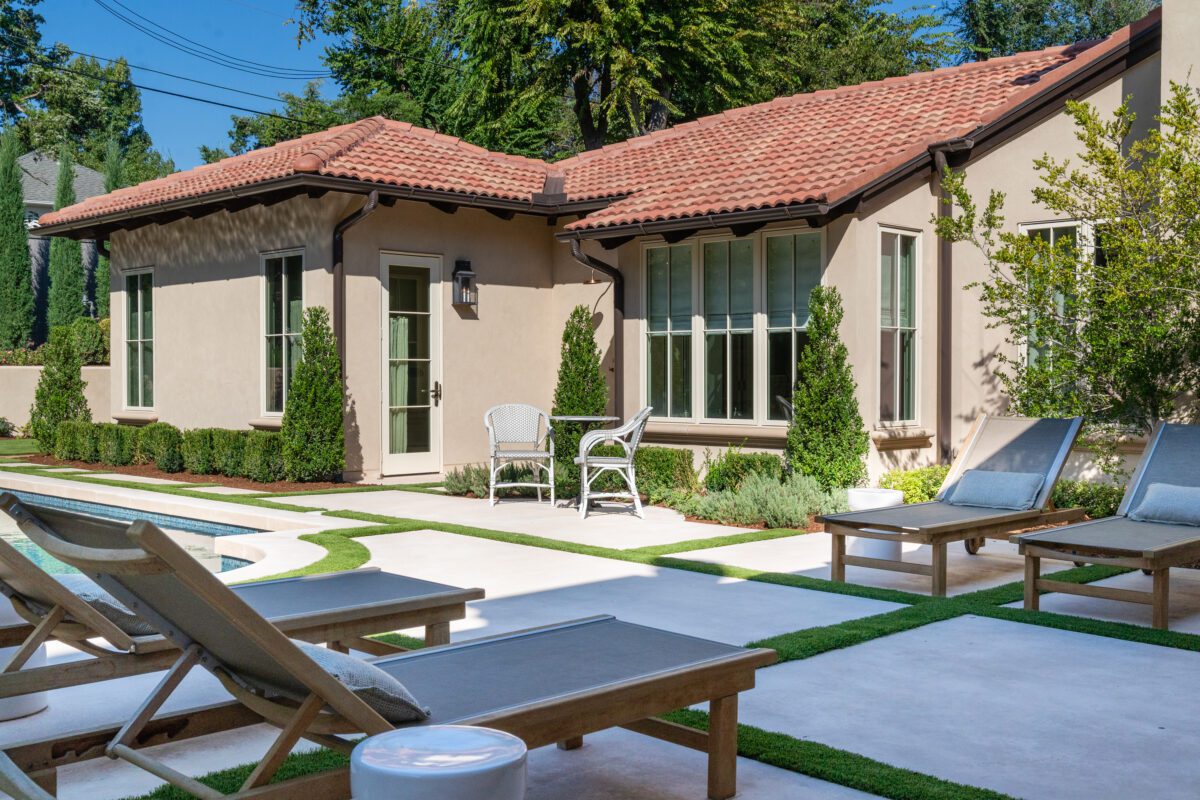
A patio is the launching point for outdoor living, whether placed in the backyard, side yard or even front yard. When planning a patio, start with the sun’s placement, says Hoffman.
“Decide what you are trying to do with that sunlight,” he says. “If it’s a west facing house, that is different than facing the other directions, so see what the sun does and work accordingly. Most patios we do are off the main house and become a beautiful outdoor living room, and they often have a roof and even vaulted ceilings with wood beams and fans.
“Typically, we install infrared heaters to make the space a year-round asset, especially if there’s a cigar or cigarette smoker involved. The patios often have fireplaces to add to the all-seasons functionality. Including kitchenettes is also common, as well as a cooking station for grilling.”
A Grand Lake Getaway
Family fun and stunning lake view living inspired interior designer Mel Bean’s recent Shangri La Grand Lake project which, once completed and staged, was revealed to the entire extended family at once.
“This was a second home for a couple with grown daughters who have nearby lake houses,” says Bean, owner of Mel Bean Interiors. “This is a home for multi-generational experiences, and the inspiration drew from the lake environment and epic views for a family of very warm, hospitable people.
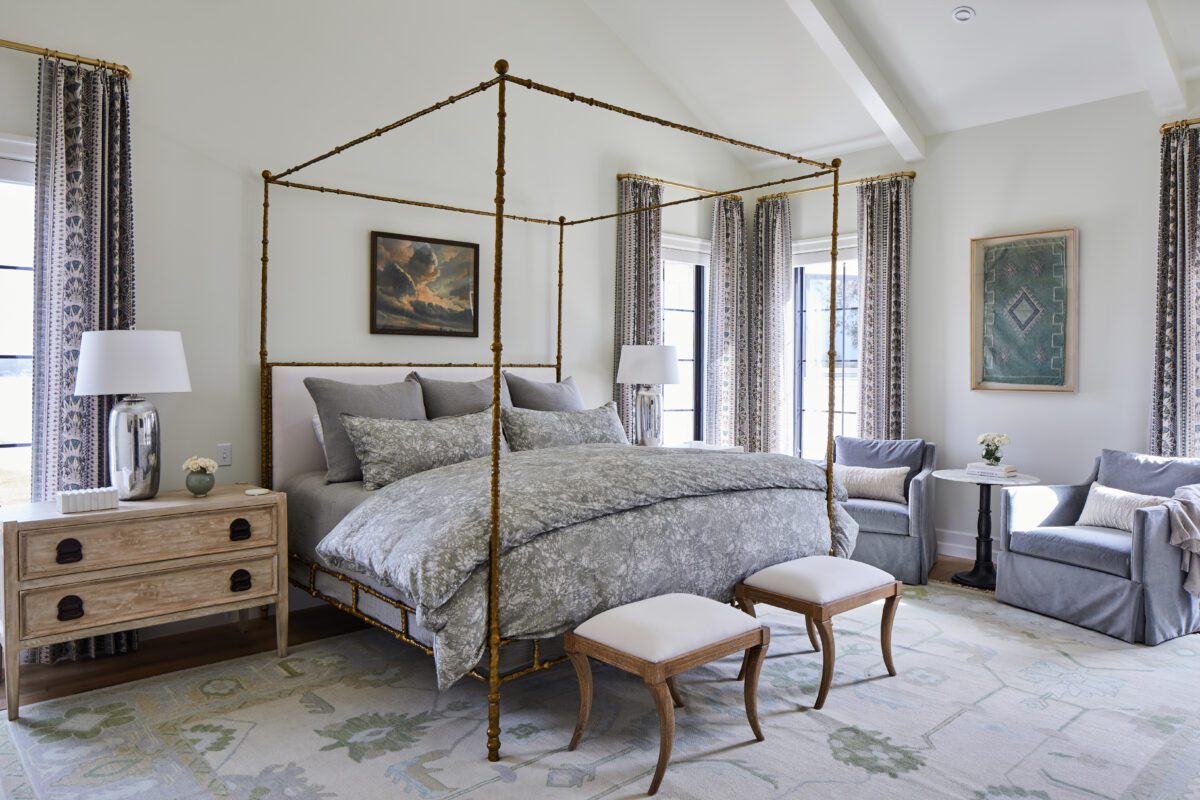
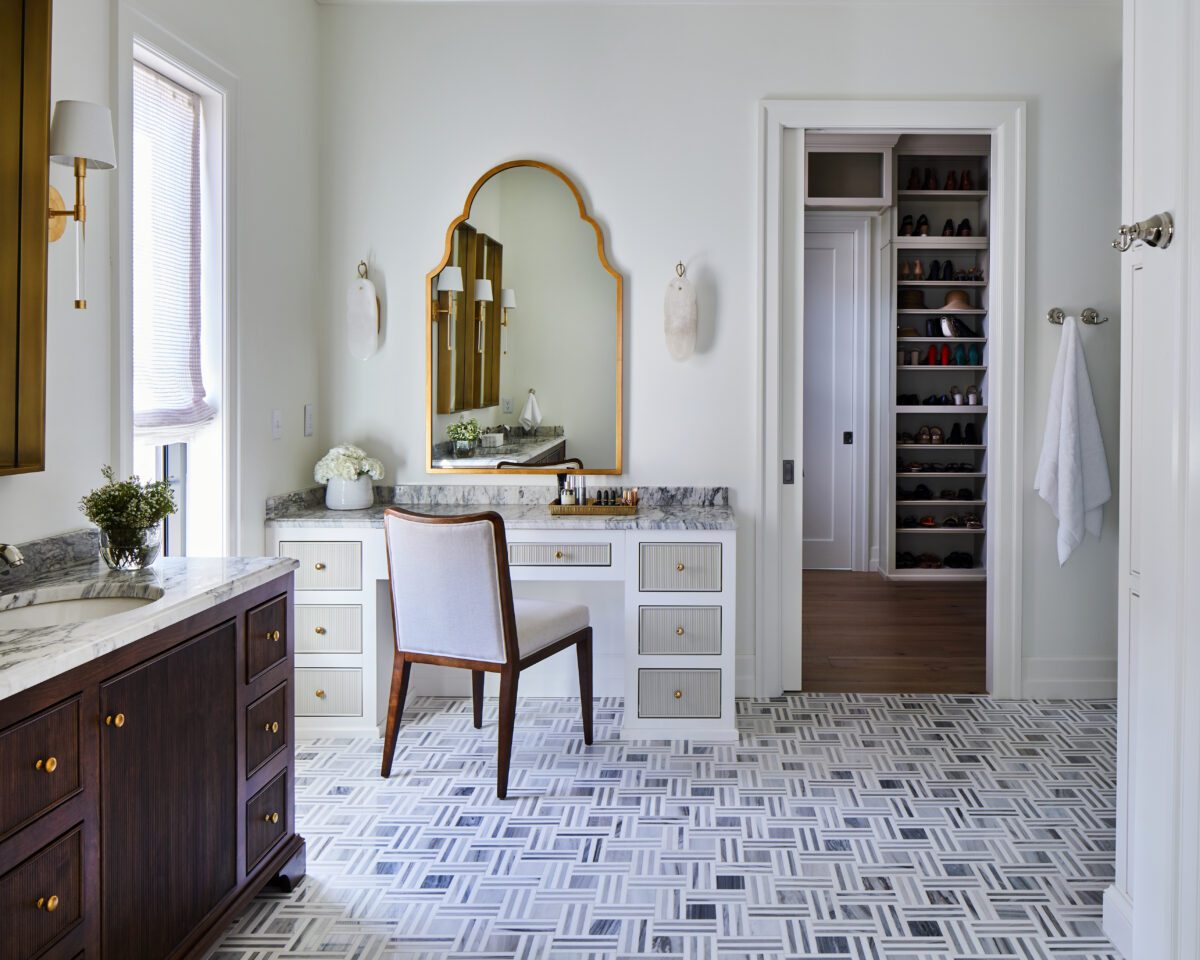
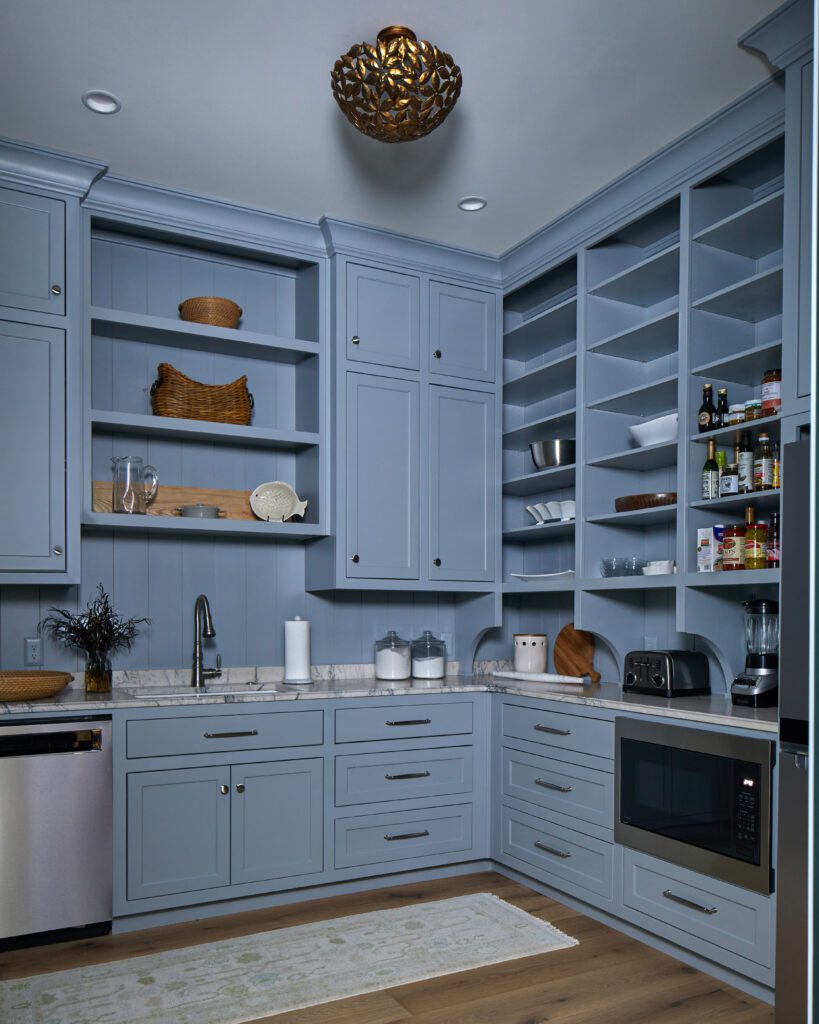
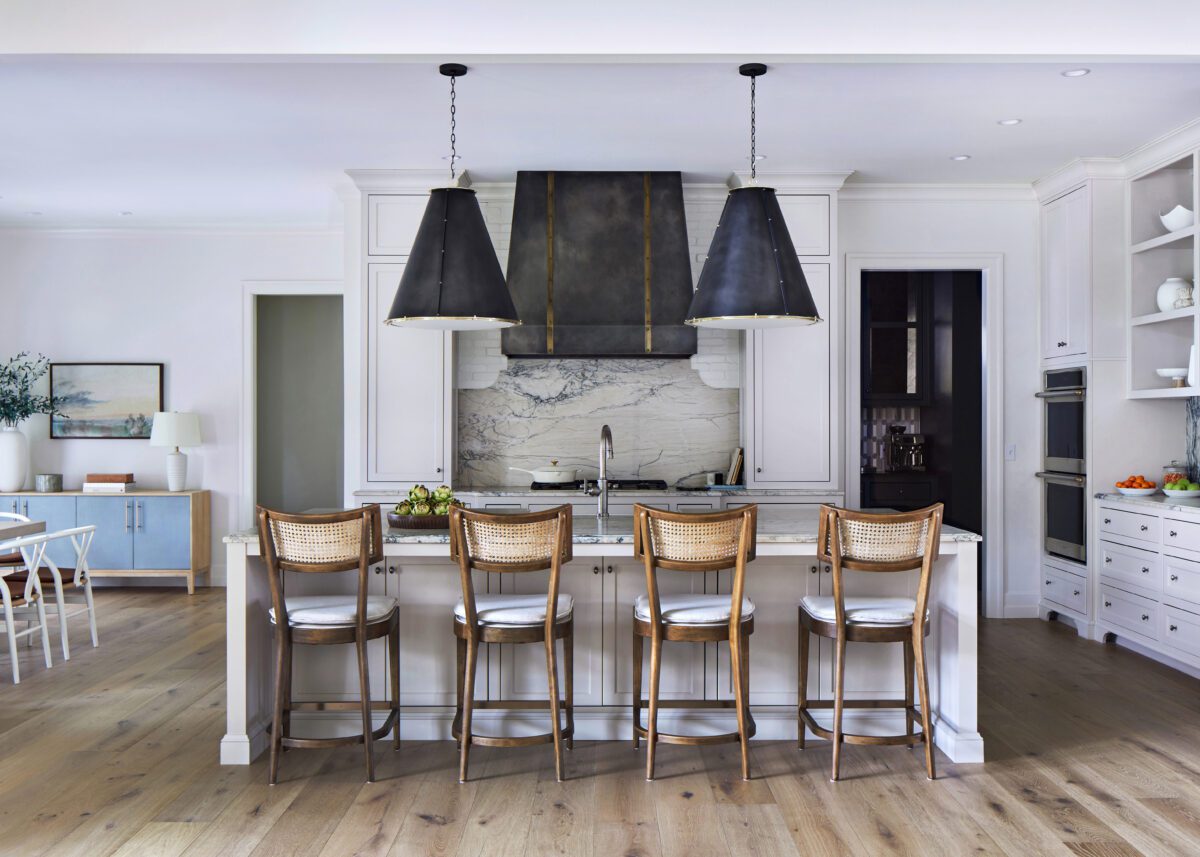
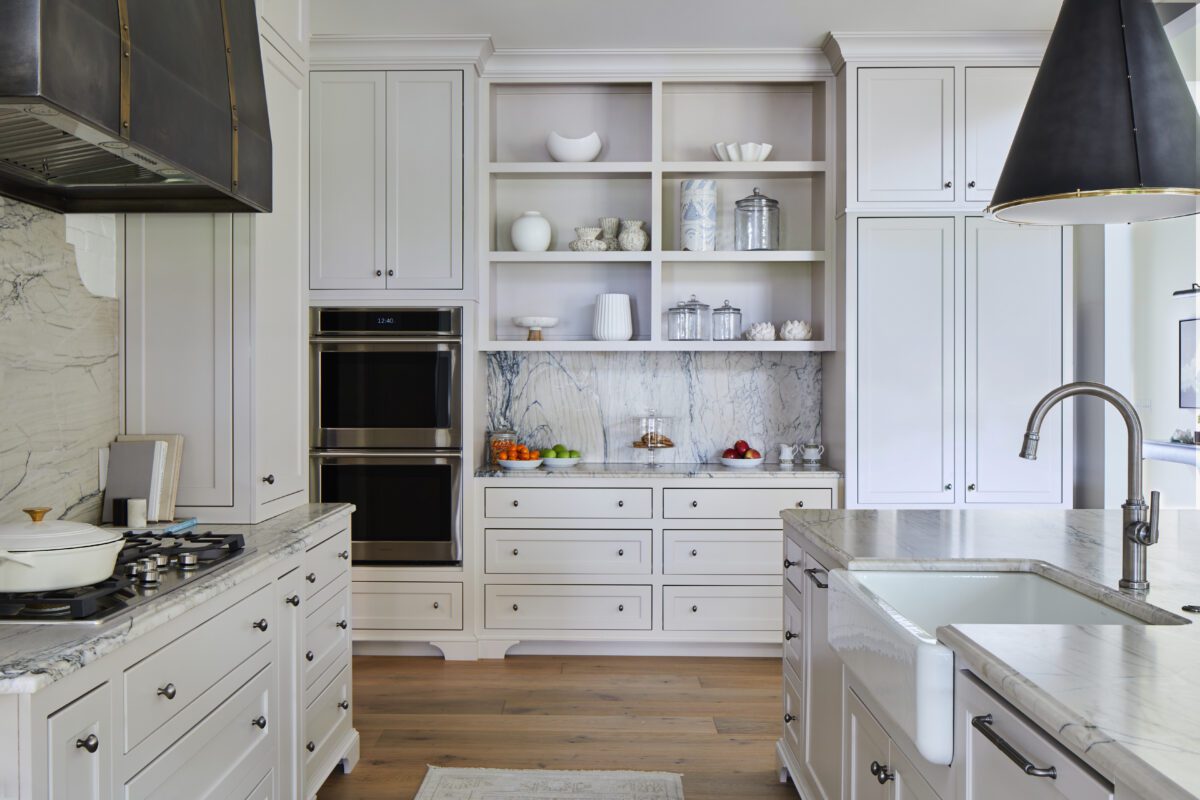
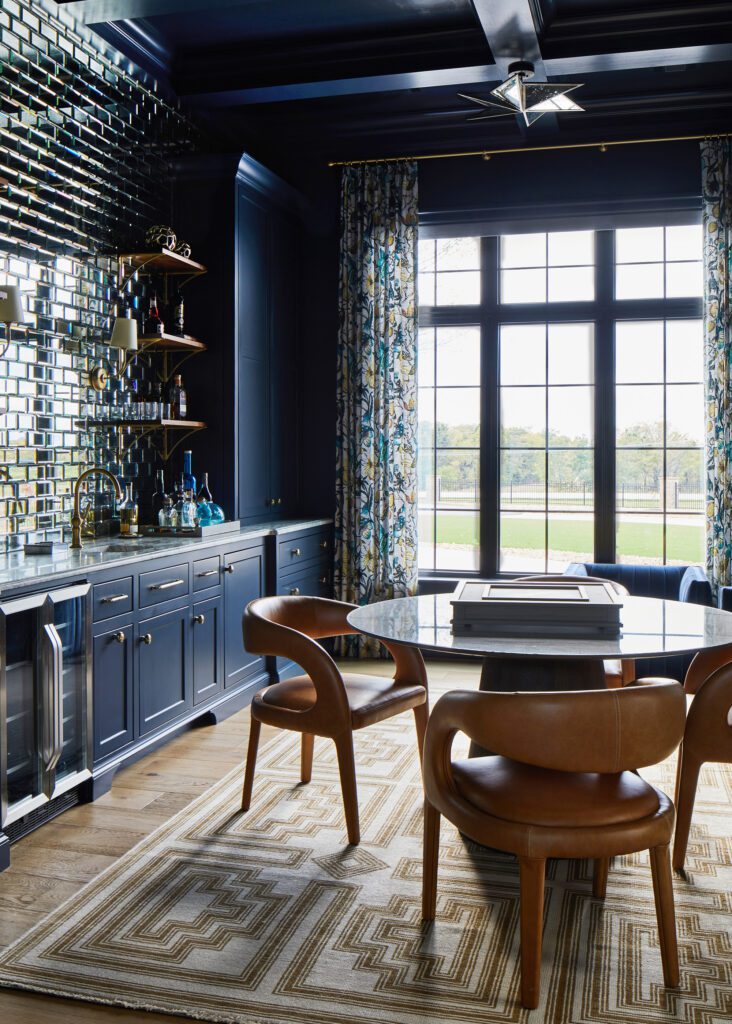


The design took a Southern hospitality approach, straddling traditional style with a casual lake house for a cozy, welcoming result.”
Entertaining is a priority, she says, and the design encompasses spaces that invite intimate gatherings, including a dining nook off the main living and kitchen area as well as a card room with a bar and a moody-hued game lounge for a club-like experience.
Bean was surprised that this cozy, darker card room – unlike the lightness of the rest of the home – has become a place that’s frequented often.
“They really do use it all throughout the day,” she says. “It’s in the front of the house, and you can look through to the back and see the lake, or the front for open fields and endless sky out the large window. It’s a spot where they make daily calls and emails from the game table and have a glass of wine in the evenings. With the large, glass pocket doors that open, it’s both spacious and intimate.”
For Bean, working with the family was her favorite part of the creation process.
“After we did the presentation process for the plan with the family, they trusted us and didn’t see it until the final reveal, which was a lot of fun,” she says. “They were so engaged and excited and trusted us to see the vision through. We always listen to the client and take inspiration from their ideas to inform the direction of the project. But we also push their boundaries a bit, and present concepts that may be beyond their comfort zones. For example, there is a console table in the foyer entry that is a bit dramatic, and at first they weren’t sure. But now it’s one of their favorite pieces.”
The project was a spirited and creative collaboration between the designer and the lady of the house with input from her daughters. The husband? Bean says his only caveat was the inclusion of comfortable recliners – and that he found the end result far more beautiful than he’d ever imagined.






















